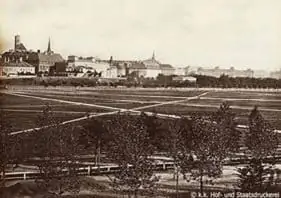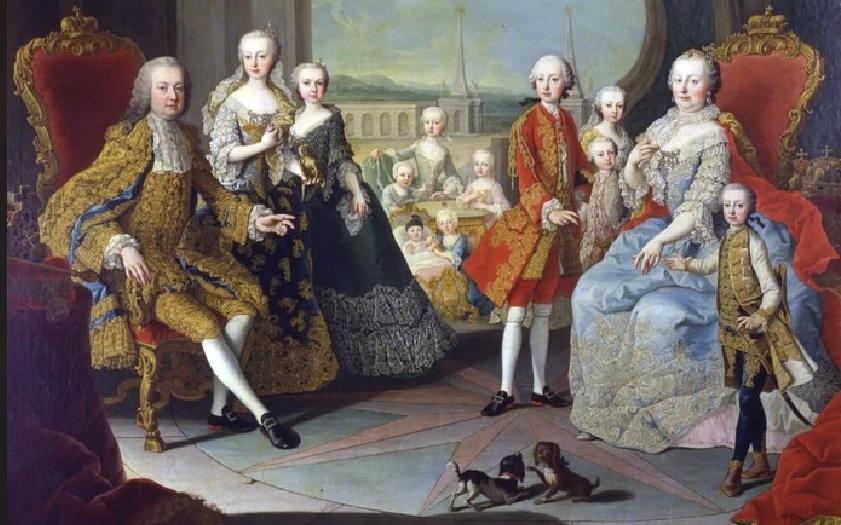Since the 18th c. the parade ground was located here. A military training area, free of plants or roads, a real drill ground. In dry weather, the dust nuisance was enormous, and when it rained, one sank into the mire. It was not until 1863 that it was decided to create grassy areas and field paths. In the course of the Ringstrasse planning, the mayor Cajetan Felder moved the military area to the Schmelz and Emperor Franz Josef I authorized the construction of the Imperial Council building, the City Hall and the University on this land.
In September 1874, the foundation stone was laid for the Reichsrat building. Copenhagen-born architect Theophil Hansen was commissioned in 1869. In addition to the design for the building, he conceived the entire equipment himself, right down to the furniture. If the pure construction time of the parliament building lasted a decade, the design took another three decades. Hansen continued to supervise all the work until his death in 1891. He built a total work of art in architecture of meaning: the parliament looks like an ancient Greek temple , since Greece is the cradle of democracy. Hansen gave all the elements of the building – from the door handle to the goddess Pallas Athena in front of the parliament – a meaning in his design. The use of materials from almost all crown lands of the monarchy, which was intended to symbolize the cooperation of all forces in the Imperial Council, also has symbolic significance. Self-sufficiency in utilities, state-of-the-art technology, a monumental structure thought out down to the smallest detail, in which architecture, fine arts, painting and crafts form a harmonious whole, were the goal. The sculptural decoration on the façade and inside illustrate the separation of powers of the legislative power and the executive power as well as the basic ideas of democracy. Thus, the Athena Fountain in front of the Parliament building points to the separation of powers as a fundamental principle of the modern constitutional state . As symbols of the beautiful, the true and the good, female allegories embodied the high moral standards of the state power emanating from the people. Since in the 19th c. only men were involved in political life, the feminine is exaggerated and idealized in order to then serve as the ideal image of the patriarchal order itself. Female figures in art symbolize the abstract principle, the “nature” of the sitter. The Greek goddess Pallas Athena in the center of the fountain, is said to embody state wisdom . In her outstretched hand, the golden figure of the goddess Nike symbolizes the success of the guardian of parliament and thus the superiority of parliamentarianism . The goddess of victory Nike can be seen eight times on the roof of the parliament as the powerful and dynamic driver of the horse-drawn carriage as a sign of the desire for divine favor for parliamentary activity. At the beginning of the ramp that leads to the Parliament, you can find four statues, the “horse tamers“. They represent an unmistakable appeal to Members to moderate their political passions in the House and exhort the principle of democratic debate: Differing views should be overcome by argument, not by hatred or means of violence. The ramp of the parliament building is adorned with eight marble statues of ancient historians. These historians are a symbolic reminder to MPs before they enter the parliament building that their work in parliament must stand the test of history and future generations. Time Travel Tip: The Parliament on the Ring is currently a construction site and is not expected to open for business until the end of 2021 after renovation work has been completed. The alternative location is on Josefsplatz in the former Redoutensälen. The parliament can be visited free of charge! More information: Guided tours (parlament.gv.at) Image source: https://de.wikipedia.org/wiki/Datei:Wien_01_Paradeplatz_am_Josefstaedter_Glacis_1863.jpg



